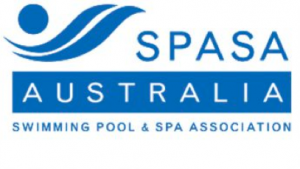Maintaining the epoxy surface
EPOXY RESIN SWIMMING POOL COATING INFORMATION
The following information is designed to answer frequently asked questions and help you get maximum life and enjoyment from your new pool coating.
Swimming pool Epoxy Coating is a high performance product, however there are certain phenomena associated with all Epoxy coatings. Your awareness of these will assist you in understanding and maintaining your Epoxy coating.
- The Epoxy coating will not be technically damaged by rain or moisture contacting the surface more than ~3 hours after completion of application. Any milky discoloration caused by early rain or heavy dew is ON, not IN, the coating. This is only a surface bloom and does not affect lasting properties. it will generally disappear within the first few weeks after the pool is filled with water. DO NOT enter the pool for 7 days after completion. Take care when walking in the empty pool as the smooth surface is very slippery when wet.
- Any leaves or insects stuck that may have been tapped on the surface of the coating while drying may be removed by gentlty scraping off after 7 days. Leaf stains on the surface will generally disappear within a week or so after the pool is filled and chlorinated.
- Stains occasionally appear within the pool coating, commonly yellow in colour, as a result of excess Amine ( hardener ) leaching to the surface of the coating. This staining can occur about one month after the painting is completed. The stain will gradually disappear as the pool chalks. This will take approximately 2-3 months during summer and 3-4 months during winter. However this is rare.
- Collected rain water will not harm the coating, but may leave a blooming mark as in 1. above.
- The pool should not be filled for ~10 days after completion in summer, or ~15 days winter.
- In summer, immediately after filling the pool, new water should be super chlorinated for the first night and sediment on the floor vacuumed. Continuous filtration should be carried out for 24 hours until the water becomes crystal clear. Salt in salt water pools may be added as soon as the pool is filled. NOTE: In winter these programs may be delayed by up to a week after filling.
- MOST IMPORTANT: Total Alkalinity (TA) of pool water should be adjusted to 160 ppm and maintained in the range 140 160 ppm. Addition of ~ 1kg bicarb soda (cooking soda) per 8,000L is usually sufficient for new or fresh pool water (9kg/72kl or 10kg/80kl). White powdery deposits on the coating surface generally indicate low Total Alkalinity (TA) (see Useful Hints including Correction of pool Chemistry). If these powdery deposits are allowed to develop unchecked, this may result in reduced life expectancy of the coating due to abrasive action of Automatic pool cleaners on the paint surface. An early indication of this is “pick-up” of colour on hands and feet. NB: CHALKING is a natural process during the life of the epoxy coating and is not a result of any defect in the paint or material used in the manufacture of the paint. However, by minimising chalking, you will maximise the life of the painted surface. To minimise chalking, Total Alkalinity (TA) should be checked regularly and maintained within the range 140-160 ppm all year round.
- pH should be maintained between 7.2 & 7.6.
- CLEANING/MAINTENANCE: In much the same way as you would cut back and polish your car from time to time as well as more frequent washing, we strongly recommend that you make a routine of vigrously brushing the walls and floor areas of the pool followed by 8 hours filtering. This should be done monthly in summer (every 6-8 weeks in cooler periods). This routine will help present a smooth, glossy, hygienic (non-algae supporting) surface to the pool water and will greatly enhance the longevity of the epoxy coating, particularly when using Calcium Hypo chlorite.
POOL RESURFACING THROUGHOUT METROPOLITAN SYDNEY AND NSW




